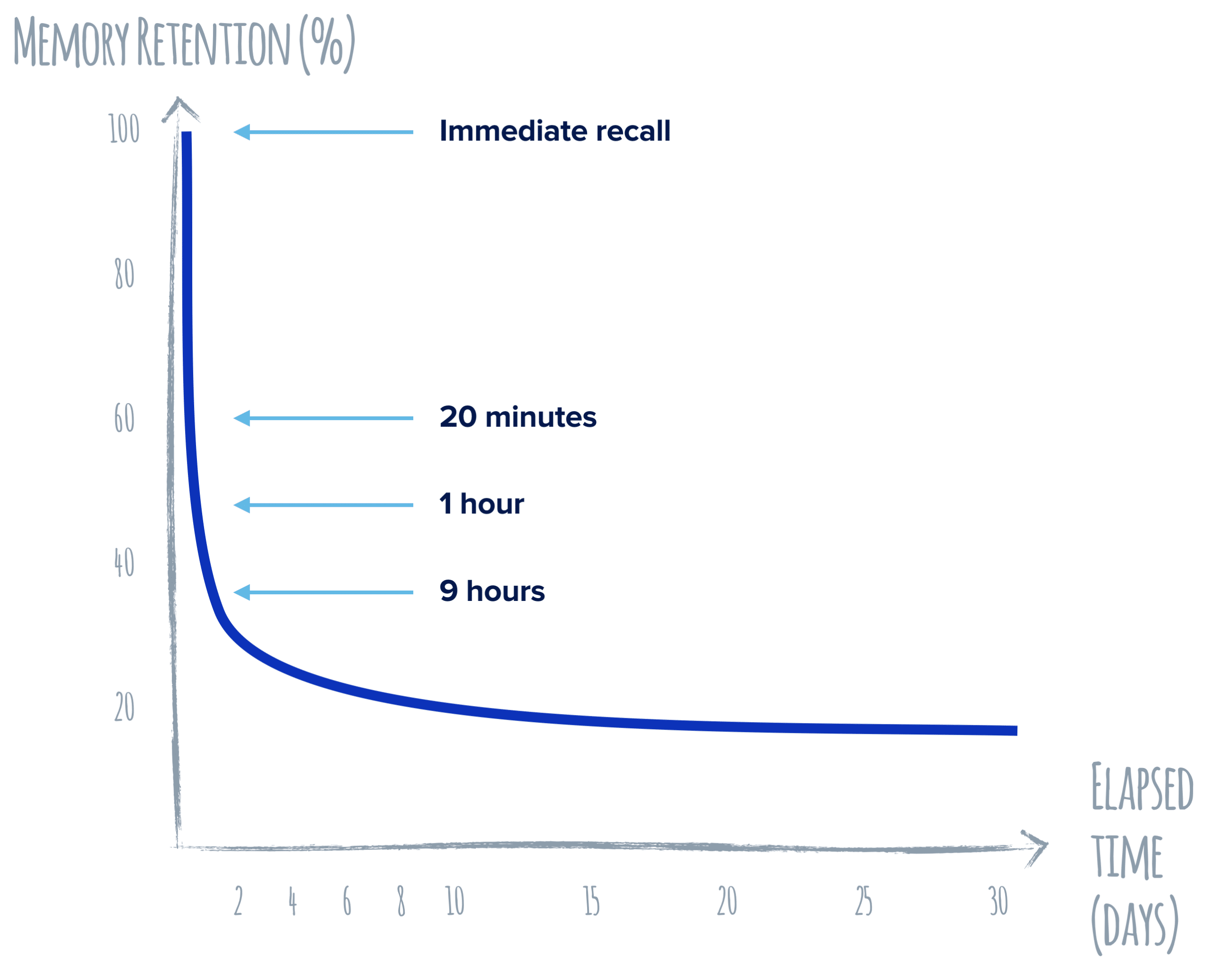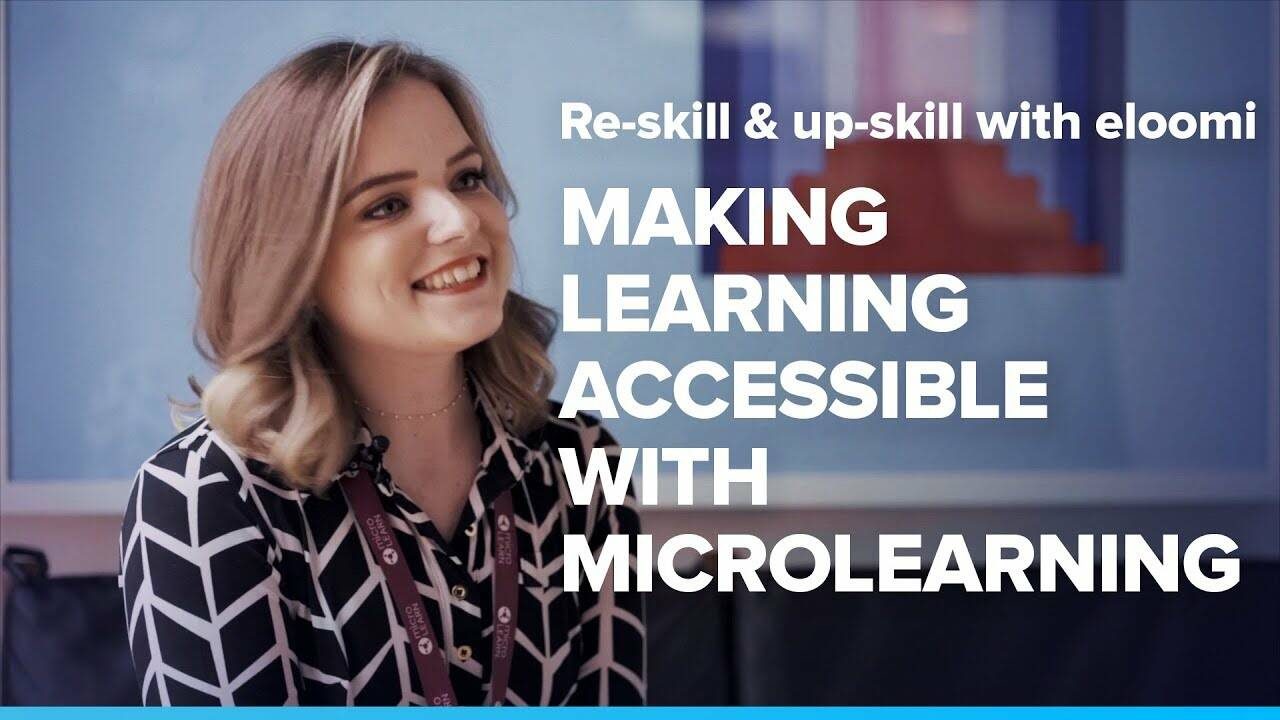According to Josh Bersin, average time dedicated to employee learning comes out to just 24 minutes a week for employees to learn and expand their knowledge. So how do you ensure your employees are finding the time to further their learning in such a short amount of time? In bite-sized pieces of microlearning lessons, of course!
This is why microlearning, learning distributed in small portions, has become more popular over the years & become a vital way to increase employee knowledge, compliance and training. So, what are some of the benefits of microlearning?
7 Microlearning Benefits
Accessible from anywhere
With microlearning materials available online, you can take learning with you anywhere. An LMS, like eloomi’s, helps facilitate learning on the go. These microlearning modules can be done when a learner has the time instead of forcing a learning session on them when they’re busy, distracted, or just not in the right headspace.
This is not only beneficial to the learner but to the organisation as well. Microlearning is also significantly less expensive than traditional eLearning training. Ray Jimenez, a learning architect, states that microlearning courses can cost 50% less than traditional eLearning course.
Solves short attention spans
We are deep in the internet age where information is provided to us within moments. This has impacted the way we process information and the attention spans we have. Microlearning not only breaks learning into smaller, easy to process pieces but also gives a learner the option to come back later. When learning is broken into 3-7 minute microlearning segments, it matches the attention spans and working memory that humans have.
Helps different learning preferences
Not every employee learns the same way. With different learning styles to keep in mind, microlearning benefits you by allowing you to cater towards specific styles. Some people prefer to learn with visuals and others with audio.
A module can contain multiple learning aids or different modules can be easily created to suit each style on the same topic. Add videos, podcasts, and articles in your microlearning modules to benefit all employees and help them learn the way they learn best.
Increased employee engagement
Showing employees that you care about their learning style is a great way to lift engagement. But taking the time to create microlearning modules to aid in employee’s personal growth and development is really the key to ensuring they are engaged.
A report by Software Advice shows that 50% of employees are more engaged by taking microlearning courses. Longer courses can not only affect their daily work but also tend to be boring. When employees are bored, they unfortunately tend to disengage.
Easy to update
Business is constantly changing. New things are being added on a weekly basis but does your learning reflect that? With microlearning being only a few minutes long, it is easy enough to just update whenever needed. Learning architect, Ray Jimenez, says that microlearning courses can be created in 300% less time than traditional eLearning courses. Up to date training has never been easier!
Easier to absorb material
Microlearning is typically filled with 1-2 learning objectives whereas its counterpart, eLearning, usually teaches you 4-5 objectives a module. With these smaller lessons, learning is easier to absorb. The Journal of Applied Psychology says that learning in “bite-sized pieces makes the transfer of learning 17% more efficient.” With this newly absorbed material, lessons from microlearning can quickly be transitioned to real-world application.
Creates a culture of learning
Microlearning makes learning something that is continuous instead of just a one-time learning experience. A learning culture is so important in an organisation since it is a big part of creating happy, engaged and informed employees.
Employees can continue to be IT compliant or be informed of company policy long after the onboarding process. Microlearning benefits the learning culture so much that Learning & Development professionals are on board with the system as well.
According to a Rapid Learning Institute survey, 94% of Learning & Development professionals prefer microlearning to traditional eLearning because their employees prefer it. With everyone in the organisation on board with microlearning, how can you resist this bite-sized treasure?
Create microlearning modules with eloomi
At eloomi, our learning experience platform is built to facilitate easy creation of courses, microlearning modules, and other forms of eLearning materials for corporate employees. Whether you operate in the United States, Denmark, or anywhere else in the world, eloomi’s industry-leading features help people develop employees in sustainable, effective ways.
To learn more, sign up for your free LMS demo today!

FAQs
What is microlearning?
Microlearning is a training technique that provides short, focused bursts of information to learners. eloomi’s platform offers microlearning options for efficient and effective learning.
How does microlearning benefit learners?
Microlearning helps learners to retain information better by breaking down complex topics into smaller, more digestible chunks. eloomi’s microlearning content is tailored to meet learners’ needs and preferences.
What are the advantages of microlearning for businesses?
Microlearning provides businesses with a flexible and cost-effective way to train their employees. eloomi’s platform offers customizable microlearning solutions to cater to different business needs.
Can microlearning be used for compliance training?
Yes, microlearning can be used for compliance training to help employees stay up-to-date with the latest regulations and standards. eloomi’s platform offers a comprehensive solution for compliance training.
How does eloomi's platform facilitate microlearning?
eloomi’s platform provides a user-friendly interface that allows users to access ready-made microlearning content from a library, import existing materials, or create custom training modules using an authoring tool. The platform also includes reporting and insights for tracking learner progress and engagement.








